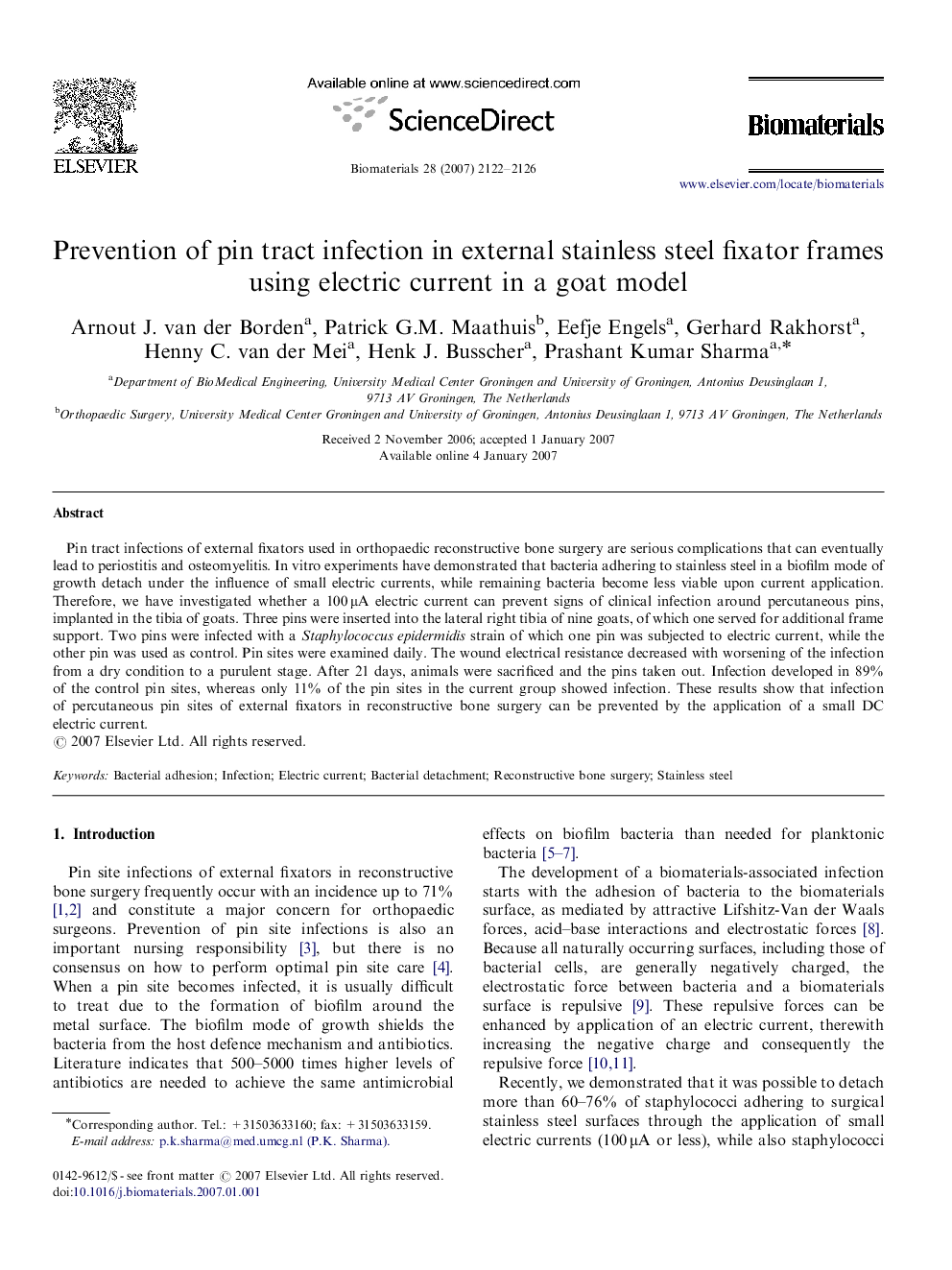| Article ID | Journal | Published Year | Pages | File Type |
|---|---|---|---|---|
| 10928 | Biomaterials | 2007 | 5 Pages |
Pin tract infections of external fixators used in orthopaedic reconstructive bone surgery are serious complications that can eventually lead to periostitis and osteomyelitis. In vitro experiments have demonstrated that bacteria adhering to stainless steel in a biofilm mode of growth detach under the influence of small electric currents, while remaining bacteria become less viable upon current application. Therefore, we have investigated whether a 100 μA electric current can prevent signs of clinical infection around percutaneous pins, implanted in the tibia of goats. Three pins were inserted into the lateral right tibia of nine goats, of which one served for additional frame support. Two pins were infected with a Staphylococcus epidermidis strain of which one pin was subjected to electric current, while the other pin was used as control. Pin sites were examined daily. The wound electrical resistance decreased with worsening of the infection from a dry condition to a purulent stage. After 21 days, animals were sacrificed and the pins taken out. Infection developed in 89% of the control pin sites, whereas only 11% of the pin sites in the current group showed infection. These results show that infection of percutaneous pin sites of external fixators in reconstructive bone surgery can be prevented by the application of a small DC electric current.
